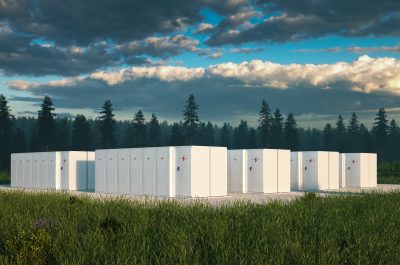Flexibility for network innovation
Energy networks are exploring alternatives to traditional network augmentation and renewal, driven by the need to successfully balance the ‘energy trilemma’ of affordability, sustainability and reliability and deliver the best outcomes for customers. This includes seeking to overcome barriers to efficient network investment.
One such example is the recent rule change request submitted by electricity distributor, Western Power, to the Australian Energy Market Commission (AEMC). Western Power notes[1] that network businesses around Australia are increasingly looking to new technologies to help satisfy the energy trilemma and, while new technology and delivery models could allow network services to be delivered with better cost or service outcomes for customers, the current Rules require clarification.
The Western Power rule change request proposes the clarification of the definition of “distribution service” in the National Electricity Rules (NER). It proposes that the definition of distribution service be amended to include non-network options, where they are used to replace, or substitute for, a network investment.[2] Western Power argues that distribution services are intended to be classified by reference to the characteristics of a particular service, not by reference to the underlying assets. Implementing a rule change in this regard would remove uncertainty about what constitutes a distribution service.
The change is required to ensure the Rules support the achievement of the National Electricity Objective[3], that being:
“…to promote efficient investment in, and efficient operation and use of, electricity services for the long term interests of consumers of electricity with respect to price, quality, safety, reliability, and security of supply of electricity; and the reliability, safety and security of the national electricity system.”
Advances in technology are fundamentally transforming the way in which energy services can be provided, and are allowing services to be provided more efficiently. Technologies such as stand-alone power systems create the potential for customers to rethink their electricity service – but they also provide opportunities for more efficient network services, particularly at the ‘fringe of grid’. The use of new technologies, including stand-alone power systems, by network service providers in delivering distribution services can deliver cost savings that can be passed onto customers through lower prices.
The rule change request recognises that, to invest in innovation, service providers require a sound business model. Distribution network service providers can only recover regulated revenue for services that are classified as distribution services by the Australian Energy Regulator (AER). If it is not clear that a particular asset can be used to provide a distribution service, it is less likely that innovative, more efficient service options will be undertaken.
The rule change request highlights the need for the NER to be sufficiently flexible to support industry transformation by removing technology bias, creating more certainty for efficient investment, and providing incentives for the adoption of, what may be, a lower cost, more reliable and safer solution.
In its request, Western Power cites the example of stand-alone power systems and estimates that they could be deployed as a more efficient service to 2,702 of its customers over the next ten years, resulting in a net benefit of $388 million compared to replacing existing network assets.[4] Western Power suggests that not only could deployment of stand-alone power systems achieve a lower cost than a network solution, potentially it could also provide a more reliable and safer outcome for customers and the network business.[5]
Customers value consideration of alternate options by network businesses. Through extensive consumer engagement interviews, workshops and surveys conducted in late 2015, Western Power determined that customers expected it to pursue innovative technologies, where they can deliver better price and reliability outcomes, specifically[6]:
- 85% of customers thought Western Power should investigate alternative technologies – if it reduced their bill; and
- 81% of customers thought Western Power should investigate alternative technologies – if it improved their reliability.
Further, to understand customer attitudes and amenability specifically for stand-alone power systems, Western Power commissioned independent research involving explorative conversations with 30 regional customers. In general, amenability to stand-alone power systems was high, with 80% of those interviewed at least partially open to the idea of having such a system.[7]
The rule change request recognises that similar issues and benefits would likely apply across the NEM, particularly to ‘fringe-of-grid’ areas, including in Queensland, New South Wales, Victoria, South Australia and Tasmania.[8]
The COAG Energy Council has recognised some of the issues identified by Western Power in its consultation paper – Stand-alone energy systems in the Electricity Market, Consultation on regulatory implications.
“A key policy question going forward is whether there is value in regulating stand-alone systems under a national framework and, if so, what this framework should cover. A further important policy question is whether barriers exist, be it in the national frameworks or jurisdictional instruments, which prevent standalone systems being built to replace grid-extensions where it is the most economically efficient way to serve those customers.”[9]
The paper recognises that stand-alone systems, by definition, challenge the purposes for which the energy regulatory framework was designed. It states that if stand-alone systems are to become a significant factor in the electricity sector, the regulatory framework needs to be adapted accordingly.[10]
“While it is apparent that network businesses are looking at the viability of stand-alone systems in fringe-of-grid areas, the question remains as to whether under the national frameworks the network businesses are sufficiently incentivised to provide stand-alone systems where it is the most economically efficient outcome.”[11]
Western Power’s rule change request seeks to allow distribution networks to invest in non-network solutions only where they do so to provide a regulated service and there is no potential for competitive services to occur as there is no customer driven transaction.[12]
The approach is consistent with a positive feature of the AER’s approach in its recently published Draft Ring-Fencing Guideline for Electricity Distribution in that it focuses on the nature of the service – and not on the underlying technology or asset.
[1] Western Power (8 September 2016) Rule Change Proposal – Removing barriers to efficient network investment, http://www.aemc.gov.au/getattachment/b379bfe2-5ee0-43e5-a36c-6eef9068b05c/Rule-change-request.aspx
[2] ibid. p. 3
[3] AEMC (2016) National Electricity Rules, http://www.aemc.gov.au/Energy-Rules/National-electricity-rules
[4] Western Power (8 September 2016), p. 11
[5] ibid. p. 3
[6] ibid. p. 27
[7] ibid. p. 27
[8] ibid. p. 4
[9] COAG Energy Council (19 August 2016) Stand-alone energy systems in the Electricity Market. Consultation on regulatory implications, p. 4
[10] ibid. p. 6
[11] ibid. p. 11
[12] Western Power (8 September 2016), p. 13



